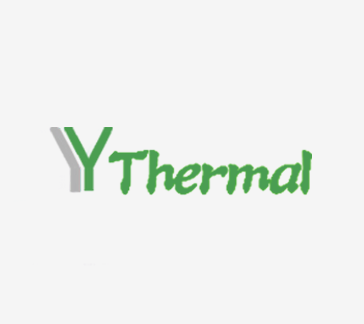Why Would The VC Radiator Been Famous?




As we all know, the traditional radiator has a simple structure, only the heat pipe, fin chip and the contact bottom surface made of copper and aluminum, and even the heat sink is just the base of fin chip and flat surface produced by the simplest aluminum extrusion process, but it is widely used. However, with the blooming of electronic products everywhere, the traditional radiator obviously can't keep up with the advanced pace, so under the condition of keeping the size unchanged, it is necessary to increase the heat dissipation power, and the VC soaking plate radiator has evolved and been born.
Principle of core temperature equalizing plate
Most of the existing soaking plates are copper substrates to facilitate welding, and the manufacturing method includes sintered structure. In the sintered structure, it is usually the surface of the copper shell, and the surface is formed with micro pores of Dry powder to slower condensation and reflow. However, its temperature of powder inside is high, which is time-consuming and laborious, and it is difficult to form whole monoliths. The consistency of sintered density effect can not be guaranteed, which leads to the performance difference and poor stability of vapor chamber. Therefore, how to avoid not using high-temperature sintering, reduce energy consumption and cost, and make the performance of vapor chamber more stable has become an urgent problem in this field.

Temperature equalizing plate technology is similar to heat pipe in principle, but its conduction mode is different. Heat pipe is one-dimensional linear heat conduction, while the heat in the vapor chamber of vacuum chamber is conducted on the two-dimensional surface, so the efficiency is higher. Specifically, the liquid at the bottom of the vacuum chamber absorbs the heat of the chip, evaporates and diffuses into the vacuum chamber, conducts the heat to the heat sink, then condenses into liquid, and then returns to the bottom. Similar to the evaporation and condensation process of refrigerator air conditioner, it circulates rapidly in the vacuum chamber, thus achieving higher heat dissipation efficiency. Temperature equalizing plate has been widely used in the heat dissipation field of electronic equipment. thermal plate uses the phase change process of working medium to achieve the purpose of effective heat transfer by absorbing and releasing latent heat. Moreover, it can effectively radiate heat with high-temperature "hot spots" and flatten it into a relatively uniform temperature field. How to make smaller, thinner and larger heat transfer temperature equalizing plates is of great significance to the field of electronic equipment heat dissipation.
Size-There is no limit in theory, but VC used for cooling electronic equipment rarely exceeds 300-400 mm in X and Y directions. Is a function of capillary structure and dissipated power. Sintered metal core is the most common type, with VC thickness between 2.5-4.0mm and minimum ultra-thin VC between 0.3-1.0 mm.
The ideal application of powerful VC is that the power density of heat source is more than 20 W/cm 2, but in fact many devices exceed 300 W/cm.
Protection-The surface finish most commonly used for heat pipes and VC is nickel plating, which has anti-corrosion and aesthetic effects.
Operating temperature-Although VC can withstand many freezing/thawing cycles, their typical operating temperature range is between 1-100℃.
Pressure- VC is usually designed to withstand a pressure of 60psi before deformation. However, it can be up to 90psi.
YYthermal Product showcase:


VC Radiator has the natural advantage of minimum occupied area, thus breaking the idea that high-power radiator must adopt heat pipe, and laying the groundwork for the miniaturization structure of products in the future.
Yuanyang thermal energy welcomes all electronic and industrial enterprises to discuss the latest heat dissipation solutions together, in the spirit of mutual cooperation and mutual discussion, so that to promote the development of heat dissipation technology to a higher level, and solve the difficult problems caused by the high temperature and happened by increase of power that affect the use and performance of products for the progress of industrialization.
- |
- +1 赞 0
- 收藏
- 评论 0
本文由香菜脆脆鲨转载自YYthermal,原文标题为:Why Would The VC Radiator Been Famous?,本站所有转载文章系出于传递更多信息之目的,且明确注明来源,不希望被转载的媒体或个人可与我们联系,我们将立即进行删除处理。
相关推荐
【技术】如何辨别水冷散热器的水冷板的优劣?
对于如何选择好的水冷散热器,很多人都很模糊,其中如何辨别好与坏更是难懂,本文源阳热能就为你讲述水冷散热器的水冷板如何辨别优劣。通过几个方面都可以大致判断一块散热器水冷板是的优劣情况,如果要求较高,可以向文轩五金提出索要散热实测数据,通过数据来断定则更加准确。
炎热的夏季,水冷板能发挥出多大的作用
在炎热的天气里,水冷板发挥着重要作用,为我们的电子设备保持良好的运行状态。水冷板是一种用于散热的设备,通过水循环的方式将设备产生的热量带走,有效降低设备的温度,确保设备的稳定性和性能。
【技术】为什么会诞生VC均温板散热器?
传统散热片只是最简单的铝挤工艺所产生出的fin片加平面底座,却应用颇为广泛。然而随着电子工业产品的遍地开花,传统散热器显然是无法再跟上先进的步伐,于是在保证尺寸不变的情况下,需要增加散热功率,VC均温板散热器也就演变诞生了。
【经验】利用热仿真软件FlothermXT确定水冷系统散热能力
目前水冷散热器主要分为两部分,冷头将热源产生的热量转移至流体里,流体将热量带到换热器部分通过风冷将热量转移至环境中,实现热传递,达到散热效果。然而对于水冷系统的散热能力却很难经验评估,本文通过热仿真软件FlothermXT研究水冷换热器的换热能力。
铲齿/铝挤散热器定制
支持铲齿散热器鳍片最大加工厚度0.1-10mm,最大宽度600mm,铝挤散热器鳍片最小铝挤厚度5mm,最小鳍片间距1cm;定制散热器产品工艺有热管焊接,穿片,打磨,铲齿,铝挤及CNC加工修边飞面等。
服务提供商 - 源阳热能 进入
研讨会2024热设计服务&导热散热材料研讨会
12月5日直播,世强硬创平台将汇聚国内外顶尖品牌原厂,带来高导热热界面材料、新型散热器、隔热材料、散热风扇、TEC、氟化冷却液等新产品新技术。
水冷板在电脑机箱中的应用,具有高效散热、低噪音、美观设计的优势
随着电脑性能的不断提升,计算机内部的热量管理成为了一个关键问题。传统的风冷系统在应对高性能组件的散热需求时逐渐显得力不从心。水冷系统作为一种高效的散热解决方案,越来越受到电脑爱好者和专业用户的青睐。本文将重点探讨水冷系统中的重要组件——水冷板在电脑机箱中的应用。
【经验】设备外壳自然散热对流系数估算经验
散热方式一般分为被动散热与主动散热两种,其中被动散热由于无需额外散热设备,是大多数低功耗设备的首选散热方式。然而,在设计被动散热设备时,由于其散热能力有限,存在极限值,需要在设计之初确定机器的散热量,本文将介绍被动散热量初步估算经验。
电子商城
服务
可定制风扇尺寸覆盖18x18x04mm~165x165x25mm,随散热器大小而定制;风扇转速范围:1000 RPM~16500 RPM。支持DC风扇,直流风扇轴流风机,鼓风机以及电脑笔记本风扇等产品定制。
最小起订量: 500pcs 提交需求>
可定制水冷板加工平面度范围0.3mm,粗糙度均最大可满足0.8umMAX以内;最大加工长度1200mm,最大厚度100mm;水冷管直径可定制范围Φ8-Φ42mm。
最小起订量: 1pcs 提交需求>

































































































































































































登录 | 立即注册
提交评论